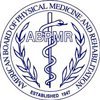
Hip pain can make staying active feel like an uphill battle, but movement is one of the best ways to manage discomfort and maintain mobility. Whether your pain stems from osteoarthritis, an injury, or another underlying condition, the right approach to exercise and daily activity can help keep you moving while minimizing discomfort. Here’s how you can stay active despite hip pain.
Understand Your Hip Pain
Before diving into an activity routine, it’s essential to understand the source of your hip pain. Osteoarthritis, bursitis, labral tears, and muscle strains are common culprits. Other conditions, like femoroacetabular impingement (FAI) or tendonitis, can also lead to chronic discomfort. Identifying the cause with your doctor can help you determine the best course of action for staying active safely.
Low-Impact Exercises for Hip Pain
Engaging in the right types of physical activity can provide relief and prevent further damage. Here are some low-impact exercises that can help strengthen your muscles and support your hip joints:
1. Swimming and Water Therapy
Water therapy is an excellent choice for individuals with hip pain because it reduces the impact on joints while still allowing for effective movement. Activities like water aerobics and swimming can help build strength without causing strain.
2. Walking
While high-impact activities like running can exacerbate hip pain, walking at a steady pace on flat surfaces can be beneficial. Be sure to wear supportive footwear and avoid uneven terrain to reduce stress on your hips.
3. Strengthening Exercises
Building muscle around the hip joint can improve stability and reduce pain. Some effective strengthening exercises include:
- Knee Extensions: Sitting on a chair, extend one leg straight out, squeeze your thigh muscles, and then slowly lower your foot back down. Repeat 20 times per leg.
- Lying Leg Lifts: While lying on your back, extend one leg and slowly raise it to a 45-degree angle. Hold for a moment, then lower it back down. Repeat 15 times on each leg.
- Standing Hamstring Curls: Stand tall while holding onto a chair for balance. Bend one knee, bringing your heel toward your buttocks. Lower slowly and repeat 20 times on each leg.
- Wall Squats with a Stability Ball: Place a stability ball between your lower back and a wall. Slowly squat down without going past a 90-degree angle, then return to standing. Repeat 15 times.
4. Stretching and Flexibility Exercises
Stretching can help maintain mobility and reduce stiffness in the hips. Simple stretches like seated hip abduction, where you push your knees outward against resistance, can improve flexibility and prevent pain flare-ups.
Modify Daily Activities to Reduce Pain
Adjusting how you move throughout the day can make a big difference in managing hip pain:
- Use Assistive Devices: A cane or walker can help reduce pressure on your hips and improve balance.
- Adjust Your Sitting Habits: Avoid sitting for extended periods and choose chairs that provide proper support.
- Pace Yourself: Overexertion can lead to flare-ups. Alternate between activity and rest to keep your pain manageable.
Listen to Your Body
Starting an exercise routine after experiencing hip pain may initially cause some discomfort. However, there’s a difference between good pain (mild soreness from muscle use) and bad pain (sharp, worsening pain). If you feel severe pain, stop and consult a healthcare provider.
When to Seek Professional Help
If hip pain persists despite modifications and gentle movement, it may be time to seek medical intervention. Options like physical therapy, interventional pain management (such as nerve blocks or injections), and regenerative medicine treatments like platelet-rich plasma (PRP) therapy can help provide relief.
Final Thoughts
Staying active with hip pain is possible with the right approach. By incorporating low-impact exercises, strengthening key muscles, and making small modifications to daily movements, you can maintain mobility and reduce discomfort. Always consult with your doctor before starting a new exercise routine to ensure it’s safe and effective for your specific condition.
Precision Pain Care and Rehabilitation has two convenient locations in Richmond Hill – Queens, and New Hyde Park – Long Island. Call the Queens office at (718) 215-1888 or (516) 419-4480 for the Long Island office to arrange an appointment with our Interventional Pain Management Specialists, Dr. Jeffrey Chacko or Dr. Sonny Ahluwalia.
Note: This article is for informational purposes only and should not be considered medical advice. Consult a healthcare professional for personalized recommendations.















